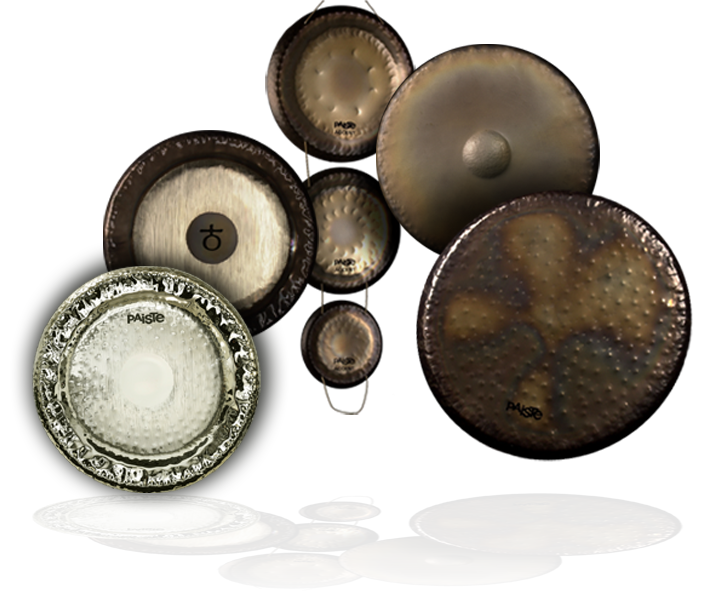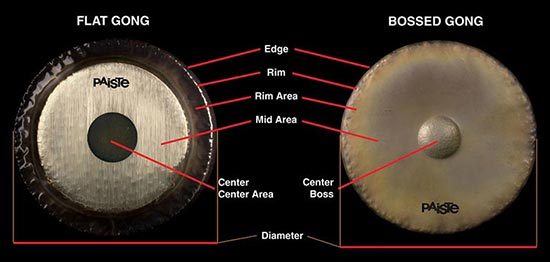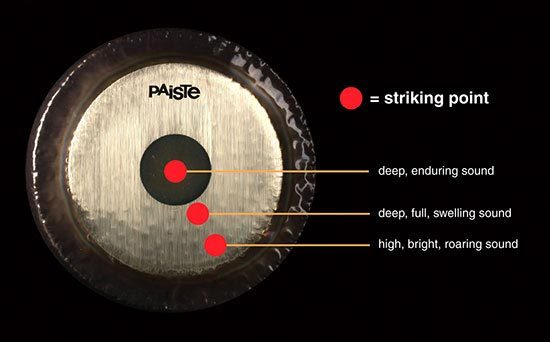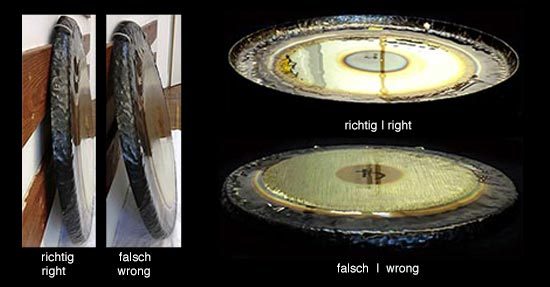Categories PAISTE Gong Center Informations
Informations

This page:
- Origin of the Gongs
- The Anatomy of Gong
- Gong Striking Area
- Suspension of Gongs
- Handling andTransport
- Gong Cleaning

Gongs belong to the oldest and most important musical instruments of South East Asia. Their origins may be traced back to the second millennium B.C., but it is assumed that the gong is much older. In Chinese history, gongs are mentioned around 500 A.D., attributed to a nation called HSI YU between Tibet and Burma during the reign of Emperor Hsuan Wu.

Depending on where the Gong is struck, it reacts differently with respect to sound.
The following principle applies:

Each Paiste Gong comes with suspension made of string. Gut string is supremely as it minimizes the transfer of vibrations to the Gong-Stand. From time to time the gut string should be examined for wear and tear and, if necessary, be replaced. Each Gong should be suspended so that it may swing freely forward, back, and to the sides without touching the stand. Replacement gut string is available on request.
Here is a video with instructions for replacing a gong gut:
Handling and Transport of Gongs

Gongs should not be set on their edge. They may fall over and the rim may be deformed.
Gongs should always be laid face down. For transportation they should be placed within each other, face down. In order not to damage the surface, one should place some form of protection between gongs, such blankets or rubber foam.

The safest mode of transportation are strong card board boxes or wooden crates with Rubber foam or blanket cushioning.
Please do not wear any jewellery or clothes with zips or belts. It is important that metal objects do not touch the Gong.
When you use the flumi, please consider playing the rear of the Gong as the sound is the same and if it does leave a mark it will be on the back.
Please avoid finger to metal contact if possible. Use clean clothes are old T Shirts if possible.
If you do mark the front of the Gong don't worry but please use elbow grease and a clean cloth to remove it asap.
Gongs should be cleaned from time to time. Dirt, which builds up during set-up, playing and transporting, acts on the Gong like a damper and inhibits its natural vibration.
Each Gong has a wax coating to guard against oxidizing and dirt build-up. During cleaning the way coat is gradually removed and has to be replaced.
For cleaning, do not use grainy or acidic cleaning agents, as well as ones containing ammonia. Cleaning and waxing of the gong should always be done in direction of the shaving (if present) on the gong surface and only with slight pressure. Use colorless and soft cloth. Apply the cleaning agent to the cloth and clean the gong. Rub off any remaining cleaning fluid with two or three more pieces of cloth. Then apply a wax coat. Best suited is a fluid clear wax, such as is usually sold for cleaning and protecting wooden surfaces.


